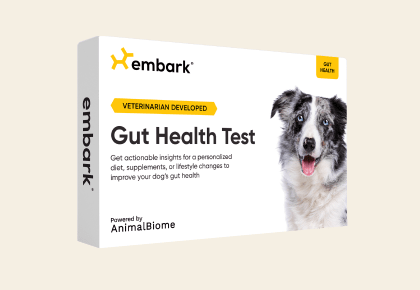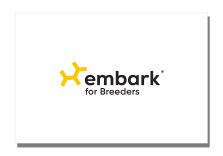Neuronal Ceroid Lipofuscinosis 2, NCL 2
A lysosome is a structure within the cell that digests and removes waste. When the lysosome cannot recycle waste properly, the waste accumulates and causes the cell to die. This form of lysosomal storage disease causes juvenile onset neurologic signs.
-
Signs and symptoms
Common symptoms reflect central nervous system malfunction and include partial or total vision loss, behavior changes, abnormal gait, and seizures. Symptoms usually progress slowly over time.
Dachshunds with this mutation are reported to show symptoms around nine months of age. -
Diagnosis
NCL is definitively diagnosed through genetic testing or examination of central nervous system (CNS) tissues after the affected dog is deceased. Clinical signs of this disease may mimic many other CNS diseases, so examination by a veterinarian or veterinary neurologist is required. Advanced imaging (CT or MRI scan) and/or spinal taps may be performed to rule out other diseases.
-
Treatment
Currently, there is no treatment for NCL. While gene therapy trials in mouse models have proven promising, there is much more research required before it can be used in veterinary hospitals.
-
What to do if your dog is at risk
Actions
- Talk to your vet about your dog’s NCL result so you can work together to plan ongoing care and monitoring. Note any changes in their coordination, mobility, or behavior.
- Keep your dog’s environment calm and consistent. Use slings, harnesses, or supportive devices as needed to help with mobility, and place rugs or mats on slippery floors to prevent falls.
- Encourage gentle, food-based activities such as treat searches or puzzle toys to help your dog stay mentally engaged without overexertion.
- Help your dog feel secure by keeping furniture in familiar places, using non-slip mats, and maintaining predictable daily routines.
-
Genetic Information
A mutation in the TPP1 gene was first identified in a Dachshund with a juvenile onset form of NCL, with symptoms starting around 9 months of age. TPP1 codes for the enzyme tripeptidyl-peptidase, which plays a role in lysosomal protein degradation; this mutation leads to a nonfunctional enzyme, leading to neurologic signs.
This disease is inherited in an autosomal recessive manner, meaning that affected dogs must have two copies of the mutation to show clinical signs.
Gene names:
TPP1 (Exon 4) ‐ chr
Inheritance type:
recessive
Citations:
-
Breeds affected
This health condition affects the following breeds
Learn about your dog’s unique genetic health
Dog owners
Breed identification, health and trait insights, personalized care recommendations, and the world’s first canine relative finder—all in one leading dog DNA test.
Learn about the report for dog ownersShop the test
Breeding programs
Embark’s test for breeding programs is one comprehensive DNA test designed with your needs in mind.
Learn about the report for breedersShop the test












